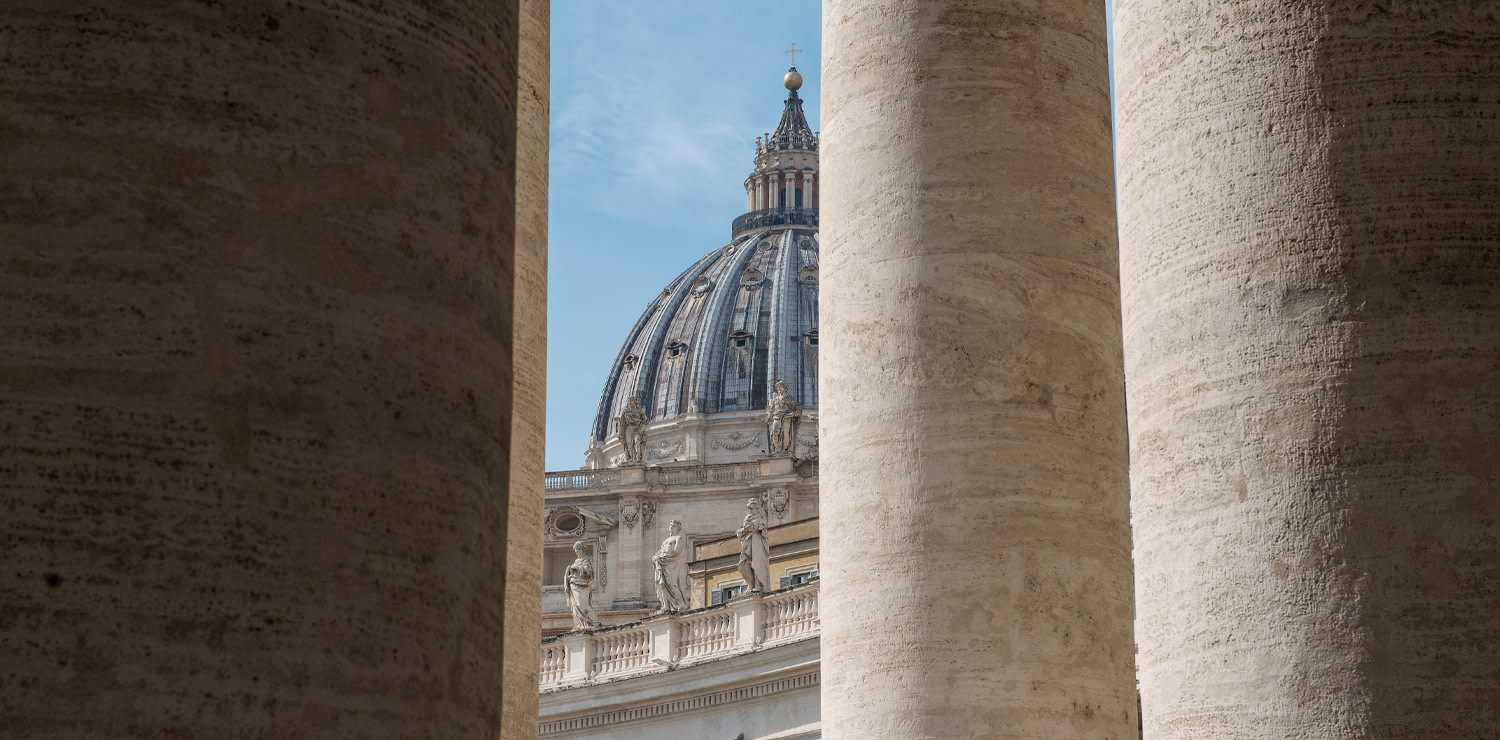An itinerary to discover the works of Gian Lorenzo Bernini in Rome
A series of masterpieces by the sculptor not to be missed in the city
They dared to go beyond what was unthinkable even for pampered Renaissance popes. For the pontiffs of Rome’s Golden Age, splendour and opulence meant influence and indoctrination. And Gian Lorenzo Bernini (1598-1680) - passionate and violent, generous and despotic - brought their dreams to life. He dictated the rules for almost 60 years. He nonchalantly took charge of the most advanced solutions, such as the elliptical spaces of his rival Francesco Borromini (1599-1665). Age played its part too; he lived a long time. And he excelled in every field, including the emerging landscape movement, turning Rome into an enormous theatre.
 The Church of Saint Andrew on the Quirinal
The Church of Saint Andrew on the QuirinalA glittering world in which opulence and poverty, obscurantism and Inquisition clash and coexist. Filthy stinking alleys, hovels and shacks suddenly open out onto splendid squares, magnificent palaces and fairytale gardens. Rome bewilders and astonishes foreign visitors. It ruled the world, but by the late 17th century, wars, corruption and waste have put an end to nearly all of it. Meanwhile, Bernini, Borromini and Pietro da Cortona (1596-1669) are creating the Baroque.
 Medusa (detail). Capitoline Museums
Medusa (detail). Capitoline MuseumsThe first to put his trust in the artist born in Naples but with Florentine roots is Cardinal Scipione Borghese (1577-1633) grandson of Paolo V (1605-1621), who already employs Bernini’s father Pietro (1562-1629) at SantaMaria Maggiore, where the Berninis will eventually be buried. They are commemorated by a simple plaque, as Lorenzo wished. A religious man and a follower of the powerful Compagnia di Gesù. Fame arrives suddenly with his statues for Palazzo Borghese: aged 20, he works with his father on Aeneas, Achises and Ascanius, still Mannerist in its spiralling composition. He is a teenager when he sculpts the bust of Giovanni Battista Santoni, head servant to Sixtus V, the start of his acclaimed series of speaking likenesses. Marble is given lifelike expression: the busts smile, speak, wink or frown in furious concentration, like David caught as he launches his stone. He models marble as if it were clay and embellishes it with stucco and bronze. This is what the Church wants: to amaze and triumph at one and the same time. The Rape of Proserpina is all about the struggle, but Pluto’s fingers press lightly on the goddess’ flesh. In Apollo and Daphne the eye is drawn by the metamorphosis of the nymph. Bernini is 24. Urban VIII (1623-1644) considers him the new Michelangelo. It’s his moment of glory. With his father, architect of the Acqua Vergine aqueduct (a role he later takes over), he creates the Barcaccia fountain. The Pope is delighted, and commissions him to restore the statue of SaintBibiana. And in 1629, Bernini inherits the prestigious factory and makes Baldachin. What the Barbarians didn’t the Berninis did, the Romans would later say, because he even plunders the Pantheon for the bronze. He works at Palazzo Barberini, creates the Triton fountain and the fountain of the Bees (after the ancient family name Tafani).
 Palazzo Barberini
Palazzo BarberiniAnd also the funeral monument for Urban VIII and the statue of St Longinus. He’s just turned 30 and has the world at his feet. He’s invited to all the parties and dabbles in theatre scenery. This year sees his meeting with Costanza Bonarelli, a lover he shares with his brother Luigi. Blinded by jealousy, he almost kills his brother and tries to disfigure his lover. But for him, all is forgiven and the pope pardons him. Meanwhile, timid Borromini is struggling. And even though San Carlino alle QuattroFontane (inspiration for Bernini’s nearby Sant’Andrea al Quirinale) leads Borromini to become architect to Innocent XPamphilj (1644-1655), Bernini manages to steal the commission for Piazza Navona. With a stratagem devised by his sister-in-law - perhaps a lover of the pope and a confidante of the artist Olimpia Maidalchini - who sends the pope a silver model of the colossal Fontana dei Quattro Fiumi (Ganges, Nile, Danube, Rio della Plata), symbolising the then known world.
 Fontana del Tritone
Fontana del TritoneAnd Bernini wins hands down. Even when he is expelled from St Peter’s by the pope himself because of structural problems with the bell towers. An accusation he refutes, responding to his detractors with a sculpture with a clear message: Truth Unveiled by Time. His art pleases the nobility and the clergy and impresses the populace. This is the century when increasingly powerful religious companies are flourishing, and dozens of saints are canonised. Thrilling figures of legend: the poor hope for miracles and join the collective delirium, while others enjoy the show. As the Cornaros appear to do in Santa Maria dellaVittoria, before the Ecstasy of St Teresa. They look as if they’re at the theatre, while the sensuality of ecstasy is highlighted by a shaft of natural light.
 Piazza Navona
Piazza NavonaWith Pope Alexander VII (1655-1667) Fabio Chigi, Bernini reaches the top. These are difficult years, but in Rome no expense is spared. The newly-converted Christina of Sweden arrives, and he designs a luxury carriage for her, he creates the twin churches of Piazza del Popolo. He then completes St Peter’s with the Scala Regia, Costantino, the Throne of St Peter and the square. He uses ellipse to accentuate the wondrous effect and makes the dome stand out by distancing the facade with two colonnades in inverse perspective. And yet another moving ecstasy: Blessed Ludovica Albertoni in San Francesco a Ripa.









